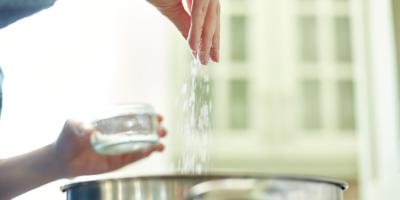
Stroke risk cut 25% by switching to lower salt foods
A new report from The George Institute for Global Health shows that dietary salt could be cut by 5 grams a day by switching to healthier foods. This would reduce stroke risk by one quarter and save thousands of lives in Australia each year.
The report is launched today to coincide with World Salt Awareness Week (25 March - 2 April) which has Salt and Stroke as this year’s theme.
“Excess salt in our diet greatly increases our risk of suffering from high blood pressure and stroke” says Professor Bruce Neal, Senior Director at The George Institute and Chairman of the Australian Division of World Action on Salt and Health (AWASH).
“It’s important to remember that it’s not just the salt people add at the table that matters. Most salt is hidden in processed and fast foods so that even people who don’t add salt are still eating far more salt than is good for them.”
“This report shows how people can greatly reduce their risks by making better food choices.”
The Australian government recommends that you try to eat just 4 grams of salt a day and not more than 6 grams. Most Australians eat far more than that target, with consumption levels in recent studies suggesting daily average intake is about 9 grams, more than double the recommended amount.
The George Institute report shows how simple switches from one processed food to another can help people to reach this target. The report used data from FoodSwitch,* a smartphone application recently released through a collaboration between Bupa Australia and the George Institute. The app allows users to scan food product bar codes and suggests healthier alternatives. The iPhone app was launched in January and has already been downloaded by 150,000 iphone users. The Android version is being launched today.
Dr Stan Goldstein of Bupa adds “The app is being used by doctors to help patients manage their health risks, but also by parents to teach their children about healthier eating, using real-time on-the-spot examples as they consider what goes into the shopping trolley.”
Warren Alexander of Wolli Creek, Sydney, who recently learned about the phone app says “I really love the FoodSwitch app, so much so that I now have my whole family using it. A close relative had a stroke three months ago so now the whole family is very aware of salt in our foods. We’ve completely changed our eating habits as a result of the health scare, and since Christmas I’ve taken sugar and salt (out of) my diet and I’ve managed to drop 8 kilos in weight which has been a real benefit to my own health.”
This year, The George Institute is working with the Stroke Foundation to promote the links between salt and stroke with events in both Melbourne and Sydney during World Salt Awareness Week.
Says Dr Erin Laylor, CEO of the National Stroke Foundation: “Every 10 minutes someone in Australia will have a stroke. Stroke is the second most common cause of death and a leading cause of disability. One in five people having a first-ever stroke die within one month and one in three die within a year. Almost nine out of ten stroke survivors live at home and many have a disability.”



